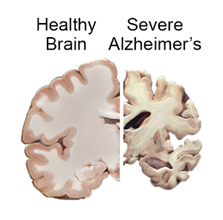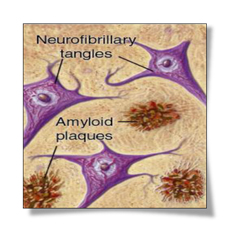Joseph R. Anticaglia, MD
Medical Advisory Board
“Everyone knows a cancer survivor, but no one knows an Alzheimer’s survivor.”
This gloomy reality has energized hundreds of present day clinical trials in attempts by scientists to prevent the onset and/or find a cure for Alzheimer’s disease (AD). Below is information about Alzheimer’s disease:
- Every minute (66 seconds) someone in the United States develops AD
- One in ten people age 65 and older has Alzheimer’s disease
- In 2017, an estimated 5.5 million Americans are living with Alzheimer’s disease.
- Almost two thirds of Americans with AD are women
- It kills more than breast cancer and prostate cancer combined
- Since 2000 deaths from AD have increased 89%
- African Americans and Hispanics are more likely to have Alzheimer’s and other dementias compared to older whites
- People with Down’s syndrome are at an increased risk to develop Alzheimer’s
- The cost of AD is in the hundreds of billions of dollars and it’s estimated by 2050 to exceed one trillion dollars
- More than 15 million Americans provide unpaid care for people with Alzheimer’s or other dementias
- Approximately I in 3 caregiver’s health has gotten worse due to care responsibilities
- One in three seniors dies with AD or dementia.
- Alzheimer’s disease causes loss of brain tissue

Dementia is not a specific disease. It’s an umbrella term used to describe a relentless, irreversible decline in a person’s mental ability and an inability to perform everyday tasks. Alzheimer’s disease is a type of dementia and it’s the most common type of dementia in adults 65 years of age and older. AD accounts for 60 — 80% of all cases of dementia.
Alzheimer’s disease slowly and deliberately destroys thinking, reasoning and memory skills. They have trouble remembering the names of people they know or recent events. Over time, people with AD may not recognize family members. One woman was overheard saying, “Don’t you know who am? I’m your wife, Peggy. We’ve been married 51 years.”
As the disease progresses, the symptoms get worse. There is an inability to carry out simple tasks such as washing, feeding or dressing oneself. These patients can exhibit mood swings and erratic behaviors. AD people can become aggressive and have been known to wander from home or a nursing facility. In the final stages, they are utterly incapable of caring for themselves (”sans everything”). It was first described at the turn of the 20th century by Alois Alzheimer.
Plaques and Tangles
In 1901 a husband was concerned about the troublesome behavior of his 50 y/o wife. Her name, Auguste D became more forgetful, had trouble with language and expressing herself. Her unpredictable behavior from calmness to aggressiveness became increasingly worrisome.
She was admitted to Frankfurt Psychiatric Hospital where Dr. Alois Alzheimer cared for her in this facility from 1901 until her death in1906. After she died in April of 1906, he performed an autopsy and described his findings, particularly, with regards to the brain.

He reported her brain to be populated with clumps of abnormal tissue deposits presently referred to as beta amyloid plaques which build up in spaces between nerve cells. These plaques can interfere with cell to cell conversations.
He also noted tangled bundles of fibers now commonly called tau tangles (neurofibrillary tangles). The protein threads twist into abnormal tangles within the brain cells compromising their function. These pathologic findings, more than a century later, scientists still consider essential features of AD Because of his work, AD is named after Dr. Alzheimer.
The clumps and tangles of protein interfere with the connections and transmission of signals among nerve cells (neurons). Neurons die or become inactivated and are incapable of relaying information between different parts of the brain. Messages from the brain are not transmitted to muscles and other vital structures in the body. There is a relentless mental and physical decline throughout the body because of this nerve cell outage. It’s a devastating scenario.
For patients, family and society, Alzheimer’s disease is a healthcare tsunami that gains momentum ach year a solution is not found for this problem. It crosses borders indiscriminately leaving depression and destruction in its wake.
References
Qiu, Chengxuan, MD, PhD et al; Epidemiology of Alzheimer’s disease: occurrence, determinants, and strategies toward Intervention; Dialogues Clin Neuroscience; Jun, 2009
Hippius, Hans MD; Neundorfer, G, MD; The Discovery of Alzheimer’s Disease; Dialogues Clin Neurosci; Mar 5, 2003
Alzheimer’s Association; 2017 Alzheimer’s Disease Facts and Figures
Bredesen, Dale E et al Reversal of cognitive decline in Alzheimer’s disease; June 12, 20`6; Aging
Addendum
- Researchers have a keen interest in unmasking why women are more prone to Alzheimer’s disease than men. Studies suggest that menopause might trigger chemical changes in the brain that promote Alzheimer’s disease.
- Dr. Dale Bredesen and his co-workers report a reversal of cognitive decline in ten patients with early Alzheimer’s disease. He maintains there are many causes of cognitive decline and if you address the etiologic factors you can help many patients. More patients and more work needs to be done to corroborate these findings
This article is intended solely as a learning experience. Please consult your physician for diagnostic and treatment options.

